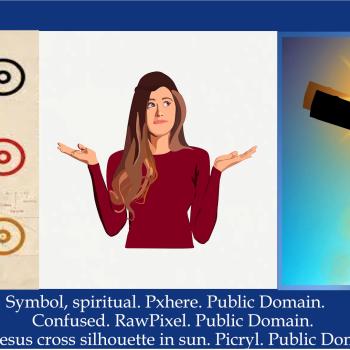
Updated October 25, 2023
There are over 450 known versions of the Bible in English alone.
Versions and Translations of the Bible
Because the Bible is not a single book but a complex arrangement of at least 66 books (Roman Catholic Bibles include another seven books that Protestants do not recognize) written over many years by multiple authors, the question concerning versions can be complicated. There are many ancient manuscripts for each of the texts in the Bible, each needing careful translation into contemporary language. Since the manuscripts we have available are nearly 98% identical (apart from inconsequential copying errors), we could say that we really only have one version of the Bible. The entire Bible has been translated into more than 700 languages, and parts of it have been translated into over 3,000 languages. Some languages have only one translation of the Bible, while others have many.
Most of the oldest texts, the Jewish scriptures, were originally written in ancient Hebrew, which was the Israelites' native language. Ancient Hebrew had no vowels; it was written from right to left, and it included various diacritics, called niqqud, that clarified a word's meaning. Ancient Hebrew dates back nearly 4000 years but gradually lost its place as the primary spoken language of Jews after their return from exile in Babylon (c. 583 B.C.). Aramaic, another Mediterranean language similar to Hebrew, became the primary language, and certain passages in the Old Testament are written in Aramaic. By the time of the first century, Aramaic was the normative language and probably the language that Jesus and his disciples spoke.
The New Testament books, all written in the decades immediately after the life and death of Jesus, were written in Koine Greek, the common language of the eastern part of the Roman Empire and the language most frequently written. Because Hebrew had fallen into disuse, many Jews could not read their own scriptures, so around the third century B.C., a group of Jewish scholars translated the Hebrew scriptures into Koine Greek. This translation of what Christians call the Old Testament is referred to as the Septuagint. The Septuagint became the commonly used version of the Old Testament among the early Christian communities, and it was the basis of the Roman Catholic translation of the scriptures into Latin in the 4th century. Roman Catholic Bibles are all derived from the Septuagint version of the Old Testament, whereas Protestant Bibles returned to the original Hebrew texts. Both Roman Catholics and Protestants use the same Greek texts in the New Testament books.
Translations from one language to another always involve complicated decisions. A translator can choose to give a literal translation, making every sentence a word-for-word exchange from one language to another. This is a translation technique that respects the author's exact choices and wants to present the actual words as directly as possible. As anyone who speaks more than one language knows, however, this can create very choppy and clunky translations that sometimes end up communicating something quite different from the original text.
Other translators aim to communicate what they believe in having been the author's original intent. Careful study of the language, the author's message, the thoughts being expressed, and the flow of the text, lead the translator to articulate the passage in a way more conducive to the modern reader's ability to understand. This translation technique is more weighted toward the meaning of the text than the literal words, understanding that sometimes a word in one language simply has a different meaning in another language. Such translations can be equally accurate, though they can become outdated as languages change and adapt.
Still, other translators are even freer in their renditions of a text, seeking maximum fluency and readability. They may modernize words that will not change the meaning of the text. For example, a "talent," which is a measure of weight and value in the Bible, might be rendered "dollar." Such translations are obviously far from literal and are usually not appropriate for serious biblical studies, but they are accessible and easy to read. Sometimes these translations are actually paraphrases, and thus they may contain a great deal of the translator's own biases or cultural contexts. Many new readers of the Bible might start with a popular paraphrase, and as he or she becomes familiar with the content, they move toward more accurate translations.
One popular app, YouVersion, has 67 English versions of the Bible. A reader can look up a verse or read a passage in The Message—a contemporary version of the Bible—and immediately see how that verse was expressed in the King James Version or the American Standard Version or the Good News Translation. Many readers merely gravitate toward translations that move them toward God, whether or not those are popular or "readable."
It is also important to note that there is a difference between versions and translations. Besides the translation complexities noted above, many publishers have released versions of these translations that include a wide variety of commentaries, devotional help, informational sidebars, maps, pictures, summaries, space for journaling, etc. Publishers have tried to tailor the packaging of these Bibles for particular audiences—men, women, teens, and children. For example, the New International Version of the Bible offers multiple variations for different audiences; the biblical text in them all will be the same, though the extra content will vary.
Popular Versions of the Bible
There are over 450 known versions of the Bible in English alone. Here are some of the most recognized versions:
- King James Version (KJV)
- New International Version (NIV)
- English Standard Version (ESV)
- New Living Translation (NLT)
- New King James Version (NKJV)
- The Message (MSG)
- American Standard Version (ASV)
- Good News Translation (GNT)
- New American Standard Bible (NASB)
- Revised Standard Version (RSV)
- Contemporary English Version (CEV)
- New Revised Standard Version (NRSV)
- Amplified Bible (AMP)
- Christian Standard Bible (CSB)
- Holman Christian Standard Bible (HCSB)
- New Century Version (NCV)
- New English Translation (NET)
- New Jerusalem Bible (NJB)
- New Life Version (NLV)
- New World
Read more about the composition of the Bible here.
10/25/2023 7:57:40 PM











